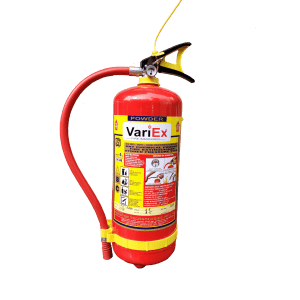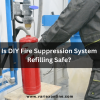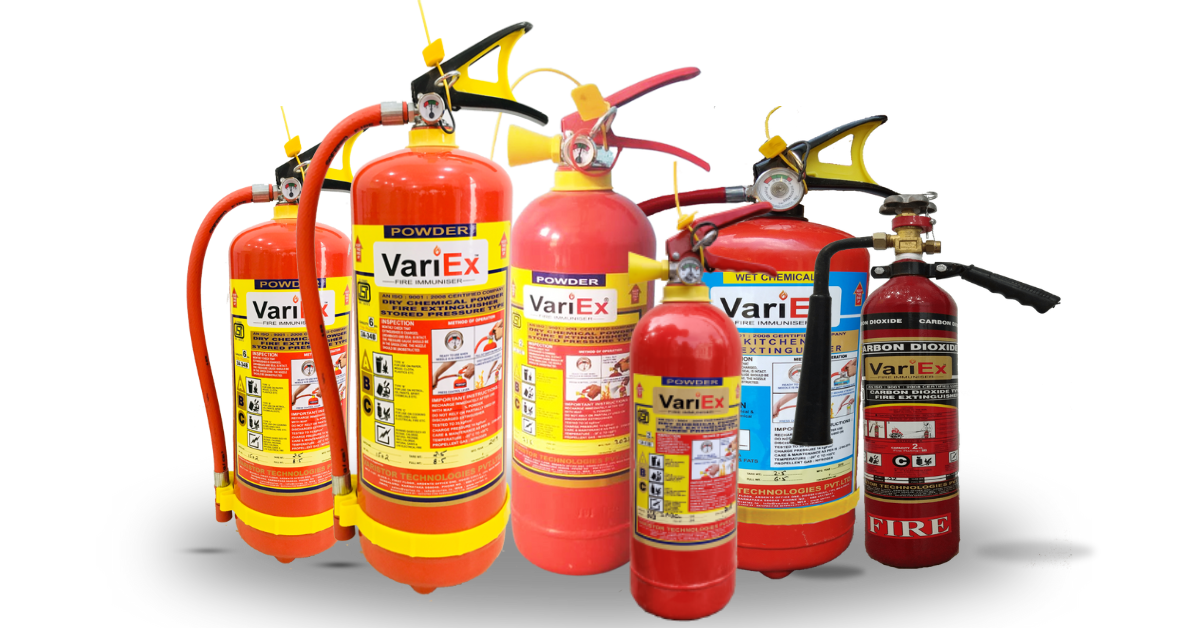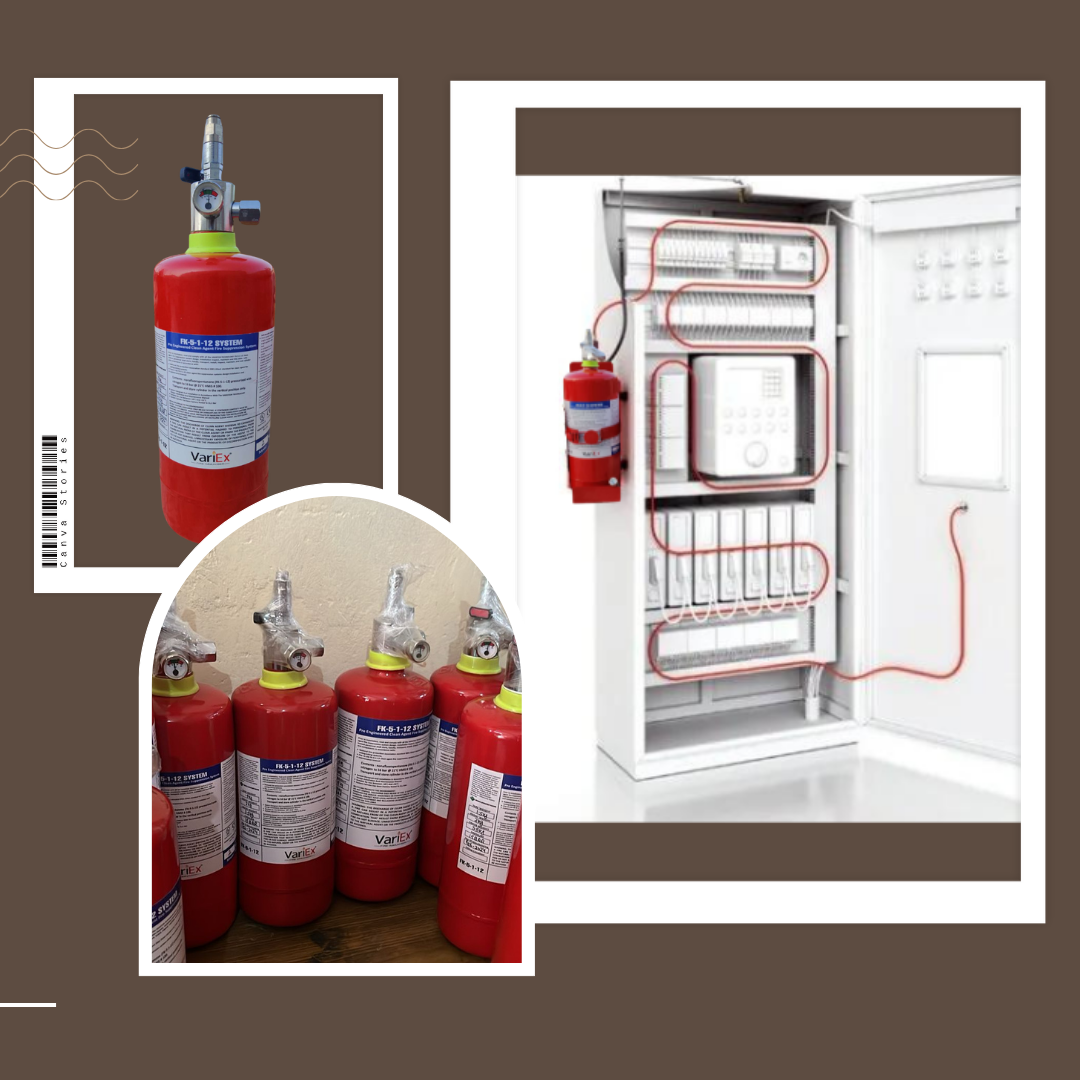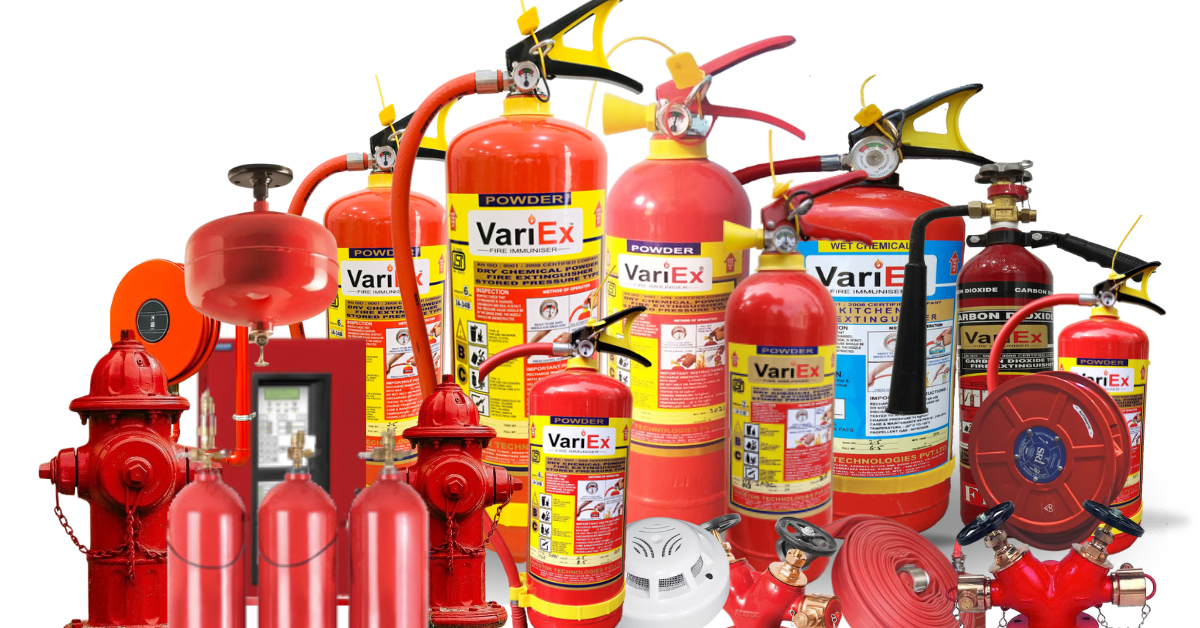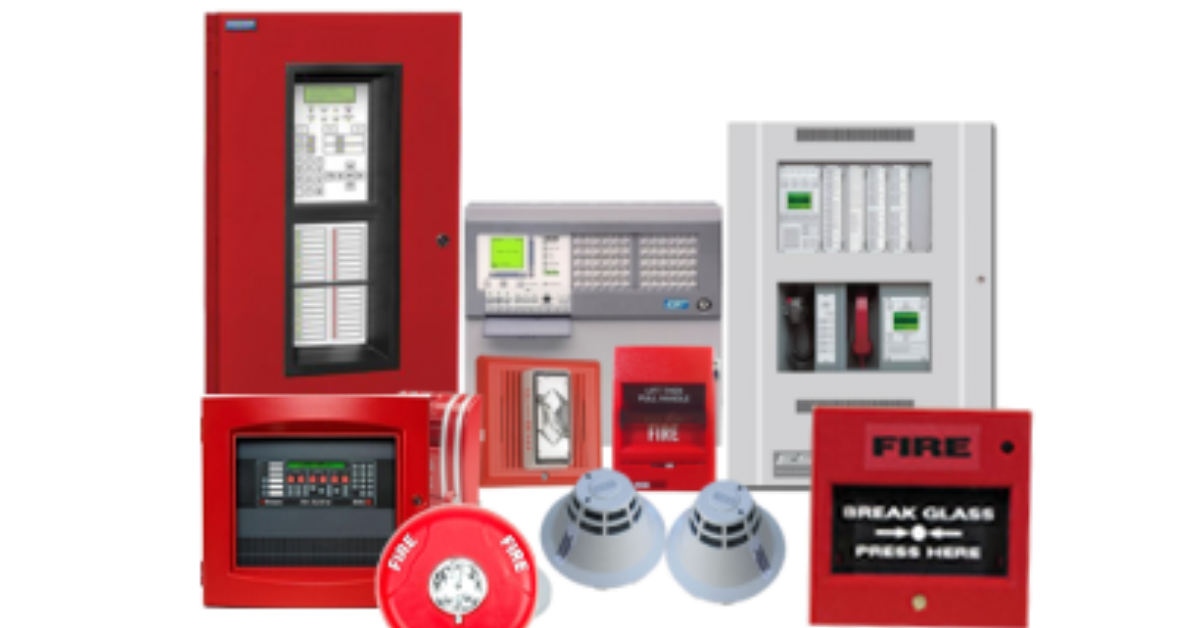![]()
Fire Immuniser
+91-7829629111
Email: info@variex.in
Varistor Technologies Pvt. Ltd.
Block-1, First Floor, Ardente Office One, Hoodi Circle, ITPL Main Road, Bengaluru, Karnataka 560048, IN
Different Between ABC and CO2 Fire Extinguisher Refilling
Fire extinguishers are an essential safety tool in any environment, whether it be a home, office, or industrial setting. They come in various types, each designed to combat different classes of fires. Two commonly used extinguishers are ABC and CO2 fire extinguishers. While both serve the same purpose of extinguishing fires, they differ in their refill process, composition, and effectiveness. In this article, we will explore the differences between ABC and CO2 fire extinguisher refilling, shedding light on their unique features and educating readers on which type may be more suitable for their specific needs.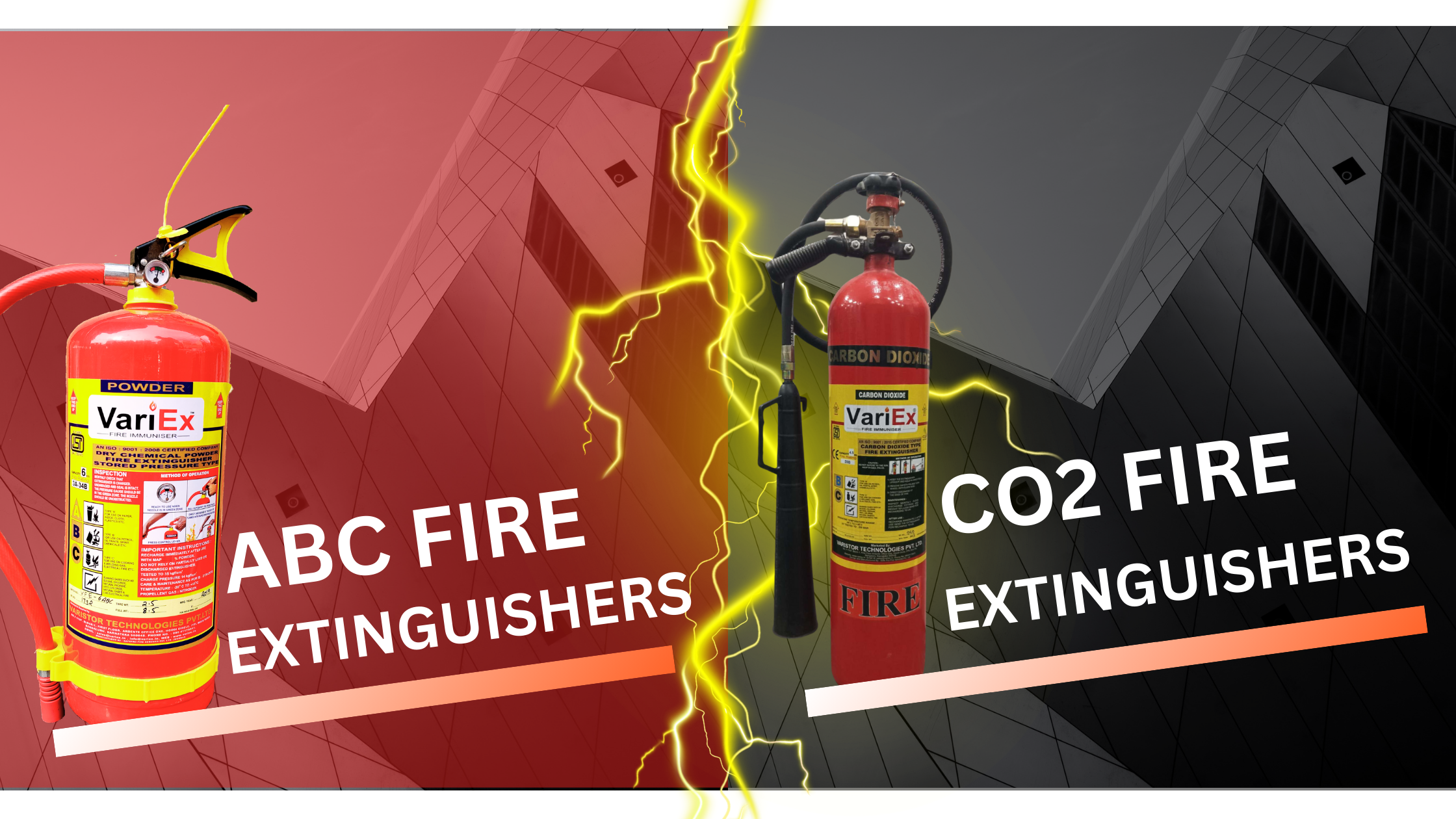
| Aspect | ABC Fire Extinguishers | CO2 Fire Extinguishers |
|---|---|---|
| Agent Composition | Dry chemical powder (monoammonium phosphate) | Carbon dioxide gas |
| Fire Classes | Class A, B, and C fires (wood, flammable liquids, electrical) | Class B and C fires (flammable liquids, electrical) |
| Refilling Procedure | Depressurize, discharge, inspect, refill with dry chemical powder, pressurize | Depressurize, inspect, refill with liquid CO2, pressurize |
| Applications | Residential, commercial, industrial settings | Laboratories, server rooms, electrical substations, computer facilities |
ABC Fire Extinguisher Refilling
ABC fire extinguishers are known for their versatility and effectiveness in combating different types of fires. These extinguishers contain a dry chemical powder composed of monoammonium phosphate. This chemical compound works by interrupting the chemical reaction that sustains a fire, thereby extinguishing it.
When it comes to refilling an ABC fire extinguisher, it is a relatively straightforward process. The first step involves locating a licensed fire equipment company or a fire extinguisher service provider. These professionals have the expertise and knowledge to handle fire extinguisher refills safely and efficiently. Once the extinguisher is taken to the service provider, they will inspect it for any damages or signs of wear and tear. If necessary, they will replace any faulty components or recharge the extinguisher.
CO2 Fire Extinguisher Refilling
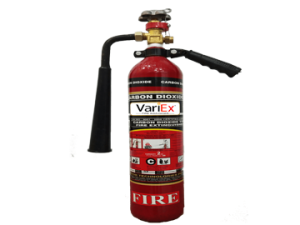 CO2 fire extinguishers, on the other hand, are specifically designed for combating electrical and flammable liquid fires. The extinguishing agent in CO2 fire extinguishers is carbon dioxide (CO2) gas. CO2 extinguishers work by displacing oxygen, suffocating the fire and preventing its spread.
CO2 fire extinguishers, on the other hand, are specifically designed for combating electrical and flammable liquid fires. The extinguishing agent in CO2 fire extinguishers is carbon dioxide (CO2) gas. CO2 extinguishers work by displacing oxygen, suffocating the fire and preventing its spread.
Refilling a CO2 fire extinguisher follows a slightly different process compared to ABC extinguishers. As with ABC extinguishers, it is crucial to seek the assistance of a licensed fire equipment company or service provider. These professionals will evaluate the extinguisher, ensuring it is suitable for refill. Unlike dry chemical extinguishers, CO2 extinguishers need to be hydro-tested periodically to verify their integrity. This hydrostatic testing involves filling the extinguisher with water and pressurizing it to a predetermined level. If the extinguisher passes the test, it can be safely refilled with CO2 gas.
Differences in Composition and Use
While both ABC and CO2 fire extinguishers are effective in extinguishing fires, their composition and application differ significantly. ABC fire extinguishers contain dry chemical powder, making them suitable for class A, B, and C fires. Class A fires involve ordinary combustibles such as wood and paper, class B fires involve flammable liquids, and class C fires involve electrical equipment.
CO2 fire extinguishers, on the other hand, contain carbon dioxide gas, making them ideal for class B and electrical fires. These extinguishers should not be used on class A fires as they may not be effective in suppressing fires involving ordinary combustible materials. Additionally, it is crucial to note that CO2 fire extinguishers are not intended for outdoor use, as the gas can dissipate rapidly in open-air environments, reducing its effectiveness.
Effectiveness
In terms of effectiveness, both ABC and CO2 fire extinguishers have their strengths and limitations. ABC fire extinguishers are highly versatile, capable of extinguishing a broad range of fires. Their dry chemical powder can rapidly suppress flames, making them an excellent choice in emergency situations where time is of the essence. However, the discharged powder may cause a mess and require thorough cleanup after extinguishing the fire.
CO2 fire extinguishers, on the other hand, do not leave any residue, making them a suitable choice for environments with sensitive equipment or materials that could be damaged by the dry chemical powder. The immediate benefit of CO2 extinguishers is their ability to quickly extinguish fires, especially electrical fires, without causing collateral damage. However, CO2 extinguishers have a limited range and may require closer proximity to the fire to be effective.
Conclusion
Understanding the differences between ABC and CO2 fire extinguisher refilling is crucial for ensuring the proper selection and maintenance of fire safety equipment. While ABC extinguishers are versatile and can combat a wide range of fires, CO2 extinguishers are specifically designed for electrical and flammable liquid fires. The choice between the two depends on the specific needs of the environment and the types of hazards one may encounter. By seeking the assistance of licensed professionals and understanding the unique properties and refilling processes of each extinguisher type, individuals can better equip themselves with the necessary knowledge to enhance fire safety measures. Remember, prevention is always key, so regular maintenance, training, and fire evacuation plans should always be priorities.
Frequently Asked Questions (FAQs)
ABC fire extinguishers contain dry chemical powder and are effective against Class A, B, and C fires, while CO2 extinguishers contain carbon dioxide gas and are effective against Class B and C fires.
Fire extinguishers should be refilled or serviced according to the manufacturer's guidelines and local regulations. Typically, they should be inspected annually and refilled or replaced as needed.
Refilling fire extinguishers should be done by trained professionals or certified technicians to ensure proper handling of the extinguishing agent and maintenance of pressure levels. DIY refilling is not recommended due to safety concerns.
Signs that a fire extinguisher needs refilling include a pressure gauge reading outside of the recommended range, visible damage to the cylinder, or evidence of leakage. Regular inspections and maintenance can help identify when refilling is necessary.
Yes, regulations regarding fire extinguisher refilling may vary depending on local jurisdiction and industry standards. It's essential to comply with relevant regulations and standards to ensure fire safety compliance.
Explore our products Range
Final Say
We at VariEx.in or Variexonline.com have mastered the art of designing, installing, inspecting, and fixing automatic sprinkler systems with the help of our in-house team, which is capable of delivering the fire sprinkler services you need, whether large or small and at affordable cost.
To schedule a fire sprinkler installation, or you think our services could benefit your commercial property, contact us online or give us a call at, 7829629111


